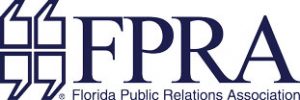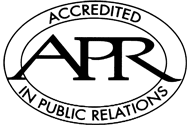Considering becoming Accredited in Public Relations (APR)? No better time than 2016! Getting your APR shows your commitment to the PR profession, designates you as a competent PR leader, gives you an opportunity to challenge yourself and provides you with a professional designation that can be meaningful to both current and future employers.
The APR process, especially the computer-based Exam, is always being tweaked – but every several years, a major review takes place. This review was just completed and resulted in some important realignments starting in 2016. The good news? The updates mean you’re being assessed on a streamlined set of objectives more relevant to your daily practice.
Two-step process
There are two main steps to becoming an APR: a Readiness Review (RR) and a computer-based Exam (CBE). The Readiness Review is an opportunity for APR candidates to present a comprehensive PR plan in a portfolio format to a panel of three APRs. The CBE is a multiple-choice Exam of about 140 questions that assesses the candidate’s knowledge, skills and abilities (KSAs) in various areas. All of this work is overseen by the Universal Accreditation Board (UAB), which includes representatives from eight PR associations – including FPRA – that banded together in 1998 to offer the universally accepted APR professional credential.
For the past year, the UAB has been comparing what PR practitioners actually do with what is assessed on the CBE. The result was a realignment of the KSAs to better reflect what we, as PR professionals, face every day. For the past several years, the KSAs fell into ten categories, with 43 learning objectives. Starting in 2016, the KSAs will cover six categories with a total of 31 learning objectives.
Differences in Organization and Emphasis
There’s quite a bit of overlap between the older KSAs and the 2016 update, but they are organized and emphasized a little differently. The 2016 Exam assess KSAs in these proportions: RACE or RPIE (33%); Leading the Public Relations Function (18%); Managing Relationships (15%); Ethics/Law (13%); Managing Issues and Crisis Communications (13%); Understanding Communications Models, Theories and History of the Profession (8%).
Because of this update to the KSAs, Exam questions needed to be revised to ensure they covered all the right areas in the proper proportion. This revision process was quite extensive, field-testing dozens of new Exam questions through a Beta Exam process, engaging the expertise of a psychometrician, and hours of analysis and review by various UAB work groups. This summer, more than 100 PR professionals around the country took the Beta Exam, which included both old and new questions – and many more questions than are typically on the CBE. Those Beta results were analyzed and the result was the updated Exam, which will launch in 2016. Many thanks to the PR professionals who went through the Beta process so this update could become a field-tested reality, including 5 FPRA members who received their APR as a result.
Steps to Follow
If you feel you’re ready to take the next step in your professional development by pursuing your APR, here’s what to do:
- Submit an application to the UAB with the $385 fee (FPRA provides a $100 rebate to candidates who sit for the exam (and pass) within 30 days of completing the Readiness Review or the chapter’s APR study session). You have one year from acceptance of your application to complete the entire process, so wait to apply until you are ready. You must be a professional member of FPRA (or one of the other UAB organizations) to get your APR.
- Study – with a cohort, online, with a mentor, using resources offered through FPRA and the UAB.
- Schedule and participate in the Readiness Review, where you submit information in advance and present a comprehensive PR plan in-person to a panel of three APRs. They ask you questions to assess your knowledge, skills and abilities that cannot be judged in the computer-based Examination.
- Complete the computer-based Exam. This multiple choice, taken at a professional testing facility in your area, Exam uses questions and scenarios to assess six areas considered critical for public relations professionals.
- To maintain your APR, you must complete a maintenance form every three years outlining your professional activities, pay a $50 fee and remain a member of one of the participating organizations.
When You’re Ready…
APR is considered the professional credential for public relations practitioners. Its purpose is to unify and advance the public relations profession by identifying those who have demonstrated broad knowledge, experience and professional judgment in the field. When you are at a point in your career when you have served as a strategic communications advisor, have a broad range of knowledge and skills, and are ready to prepare for an oral presentation and computer-based exam to demonstrate your PR knowledge, skills and abilities – pursue your APR!
Detailed information about the process is available at www.praccreditation.org. To find out more about FPRA support options, contact your chapter’s Accreditation Chair or Vice President of Accreditation and Certification Ryan Gerds, APR, CPRC, at rgerds@rtix.com.

